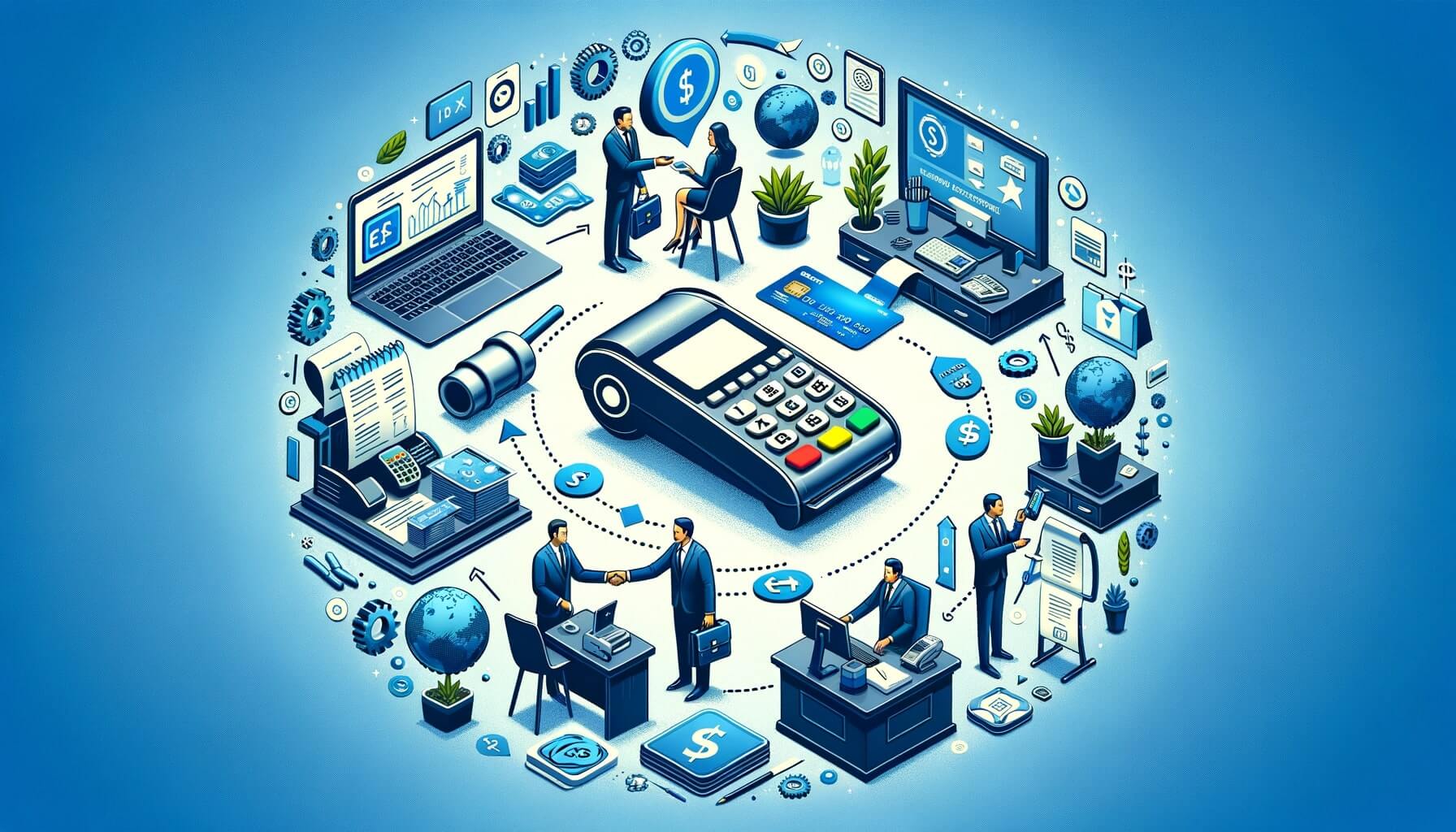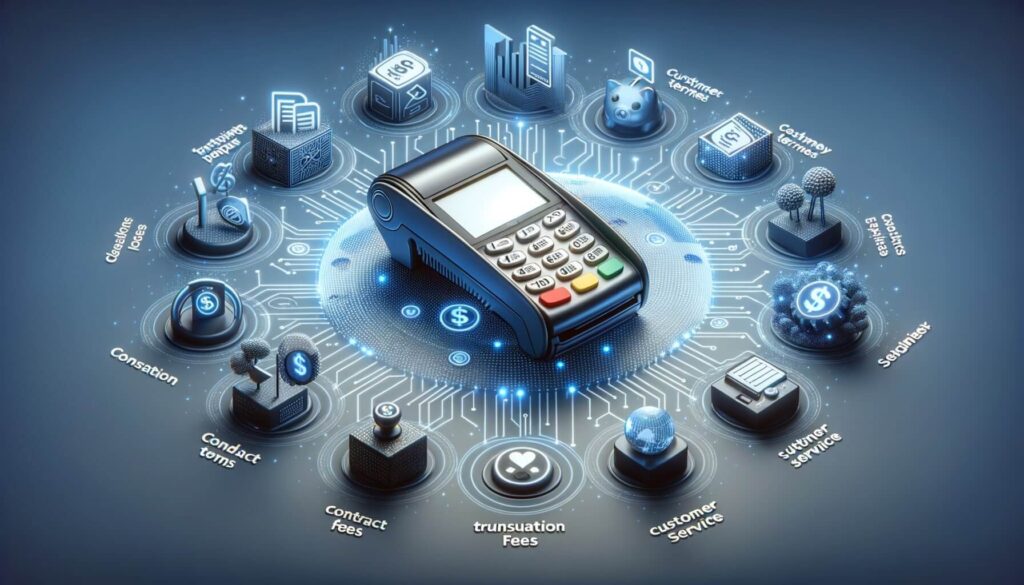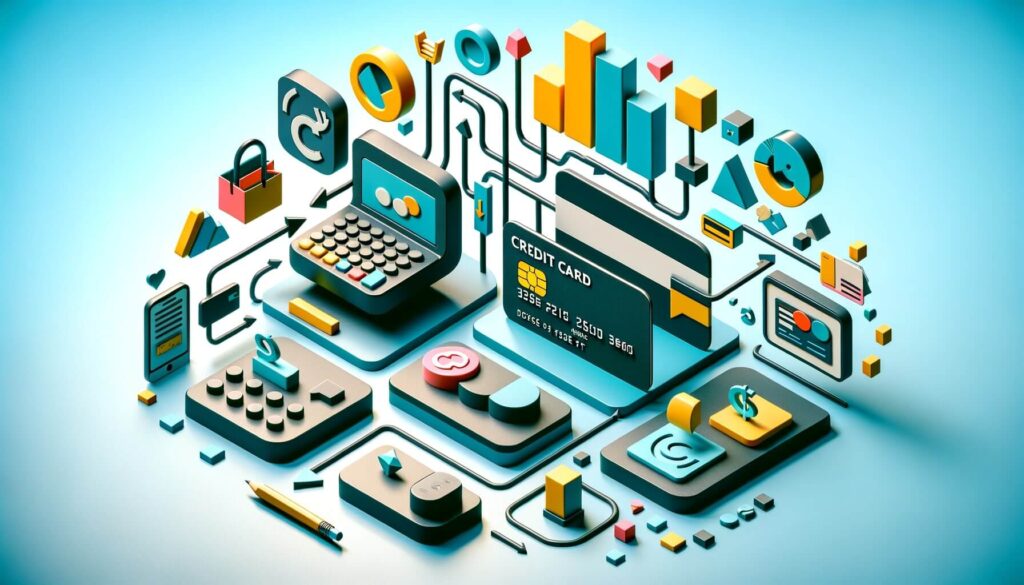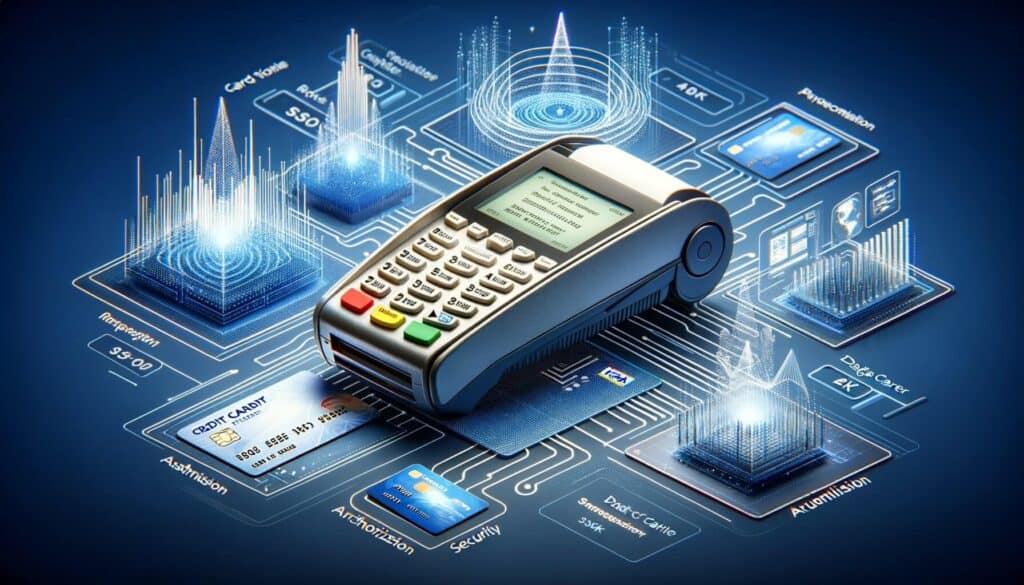
By Crystal Hopkins March 31, 2025
In today’s digital age, credit card terminals have become an essential tool for businesses of all sizes. Whether you run a small retail store or a large e-commerce platform, having a credit card terminal allows you to accept payments from customers using their credit or debit cards. This not only enhances the convenience for your customers but also opens up new avenues for revenue generation.
In this comprehensive guide, we will explore the various aspects of getting a credit card terminal for your business, including the types of terminals available, factors to consider before making a decision, the application process, installation and configuration, payment processing, security measures, troubleshooting common issues, and frequently asked questions.
Types of Credit Card Terminals: Choosing the Right Option for Your Business
When it comes to credit card terminals, there are several options available in the market. The choice you make depends on the nature of your business, your budget, and your specific requirements. Let’s take a closer look at the different types of credit card terminals:
1. Traditional Wired Terminals: These are the most common type of credit card terminals that connect to a phone line or internet connection. They are reliable, easy to use, and offer a wide range of features such as printing receipts and processing chip-enabled cards.
2. Wireless Terminals: Ideal for businesses that require mobility, wireless terminals use cellular networks to process payments. They are perfect for businesses that operate on-the-go, such as food trucks or delivery services.
3. Virtual Terminals: Virtual terminals allow businesses to accept credit card payments online. They are typically used for e-commerce websites or businesses that operate remotely. Virtual terminals can be accessed through a web browser and do not require any physical hardware.
4. Mobile Card Readers: These compact devices can be attached to smartphones or tablets, turning them into credit card terminals. They are convenient for small businesses or individuals who need a portable payment solution.
Factors to Consider Before Getting a Credit Card Terminal

Before diving into the process of getting a credit card terminal, there are several factors you should consider to ensure you make the right choice for your business. Let’s explore these factors in detail:
1. Business Type and Size: The type and size of your business play a crucial role in determining the type of credit card terminal you need. Consider whether you have a physical store, an online business, or a combination of both. Additionally, assess the volume of transactions you expect to process on a daily basis.
2. Cost: Credit card terminals come with various costs, including upfront fees, monthly fees, and transaction fees. Evaluate your budget and choose a terminal that aligns with your financial capabilities.
3. Payment Processing Options: Different credit card terminals support different payment processing options. Determine whether you need to accept chip-enabled cards, contactless payments, or mobile wallet payments like Apple Pay or Google Pay.
4. Integration with Existing Systems: If you already have a point-of-sale (POS) system or other software in place, ensure that the credit card terminal you choose can seamlessly integrate with your existing systems.
5. Customer Support: Look for a credit card terminal provider that offers reliable customer support. In case of any issues or technical difficulties, having access to prompt assistance can save you time and frustration.
Step-by-Step Guide: How to Apply for a Credit Card Terminal

Now that you have a clear understanding of the different types of credit card terminals and the factors to consider, let’s dive into the step-by-step process of applying for a credit card terminal:
1. Research Providers: Start by researching different credit card terminal providers. Look for reputable companies with positive reviews and a track record of excellent customer service.
2. Compare Pricing: Once you have shortlisted a few providers, compare their pricing plans. Consider the upfront costs, monthly fees, transaction fees, and any additional charges.
3. Assess Features: Evaluate the features offered by each provider. Look for features that align with your business needs, such as the ability to accept chip-enabled cards or contactless payments.
4. Read the Terms and Conditions: Before making a decision, carefully read the terms and conditions of the provider. Pay attention to any hidden fees, contract lengths, and cancellation policies.
5. Apply for a Merchant Account: To accept credit card payments, you will need to apply for a merchant account. This account acts as a holding account for the funds from your credit card transactions.
6. Complete the Application: Fill out the application form provided by the credit card terminal provider. You will need to provide information about your business, including your business name, address, tax ID, and bank account details.
7. Wait for Approval: Once you have submitted your application, the provider will review it and assess your eligibility. This process may take a few days, so be patient.
8. Purchase or Lease the Terminal: If your application is approved, you can proceed with purchasing or leasing the credit card terminal. Consider the provider’s recommendations and choose a terminal that suits your business needs.
9. Set Up the Terminal: Once you have received the terminal, follow the instructions provided by the provider to set it up. This may involve connecting it to a phone line or internet connection and configuring the settings.
10. Test the Terminal: Before accepting payments from customers, conduct a few test transactions to ensure that the terminal is functioning correctly. This will help you identify any issues and resolve them before going live.
Setting Up Your Credit Card Terminal: Installation and Configuration Process

After successfully applying for a credit card terminal, the next step is to set it up and configure it according to your business requirements. Here is a detailed guide on how to install and configure your credit card terminal:
1. Unbox the Terminal: Carefully unbox the credit card terminal and ensure that all the components are present. This typically includes the terminal itself, power cables, phone line cables (if applicable), and any additional accessories.
2. Connect to Power: Plug in the power cable into the terminal and connect it to a power source. Ensure that the terminal is receiving power and turned on.
3. Connect to Phone Line or Internet: If you are using a traditional wired terminal, connect the phone line cable to the terminal and the phone jack. Alternatively, if you are using an internet-enabled terminal, connect it to your internet router using an Ethernet cable.
4. Configure Network Settings: If your terminal requires network configuration, follow the instructions provided by the provider to set up the network settings. This may involve entering your Wi-Fi password or configuring IP addresses.
5. Test Connectivity: Once the terminal is connected to the phone line or internet, test the connectivity by performing a test transaction. Ensure that the terminal can communicate with the payment processor and process transactions successfully.
6. Set Up Payment Processing: Depending on the credit card terminal provider, you may need to set up payment processing by linking your merchant account to the terminal. Follow the instructions provided by the provider to complete this process.
7. Customize Settings: Most credit card terminals allow you to customize settings such as receipt printing options, tip options, and currency settings. Configure these settings according to your business preferences.
8. Update Firmware: Check if there are any firmware updates available for your credit card terminal. Firmware updates often include bug fixes and security patches, so it is important to keep your terminal up to date.
9. Train Staff: If you have employees who will be using the credit card terminal, provide them with training on how to use it effectively. Familiarize them with the different features and functions of the terminal.
10. Regular Maintenance: Once your credit card terminal is set up and functioning correctly, make sure to perform regular maintenance tasks such as cleaning the terminal, updating software, and replacing any worn-out components.
Understanding Payment Processing: How Credit Card Terminals Work

To fully grasp the functioning of credit card terminals, it is important to understand the payment processing workflow. Here is a breakdown of how credit card terminals work:
1. Card Swiping or Insertion: When a customer makes a purchase and chooses to pay by card, the card is either swiped or inserted into the credit card terminal. This allows the terminal to read the card information.
2. Data Encryption: The credit card terminal encrypts the card data to ensure its security during transmission. Encryption converts the card information into a code that can only be decrypted by the payment processor.
3. Authorization Request: The credit card terminal sends an authorization request to the payment processor, which acts as an intermediary between the merchant and the customer’s bank. The request includes the card information, transaction amount, and merchant details.
4. Payment Processor Verification: The payment processor verifies the card information and checks if the customer has sufficient funds to cover the transaction. It also performs additional security checks to prevent fraudulent transactions.
5. Authorization Response: The payment processor sends an authorization response back to the credit card terminal. This response indicates whether the transaction is approved or declined. If approved, it also includes an authorization code.
6. Customer Verification: In some cases, the credit card terminal may prompt the customer to enter a PIN or sign a receipt to verify their identity. This adds an extra layer of security to the transaction.
7. Transaction Completion: Once the customer verification is complete, the credit card terminal finalizes the transaction. It generates a receipt for the customer and deducts the transaction amount from the customer’s account.
8. Settlement: At the end of the day, the credit card terminal sends a batch of transactions to the payment processor for settlement. The payment processor transfers the funds from the customer’s bank to the merchant’s bank account.
9. Funding: The funds from the settled transactions are deposited into the merchant’s bank account within a specified time frame, usually within a few business days.
Ensuring Security: Best Practices for Protecting Customer Data
As a business owner, it is your responsibility to ensure the security of your customers’ data when processing credit card transactions. Here are some best practices to follow:
1. PCI Compliance: Ensure that your credit card terminal and payment processing systems are Payment Card Industry Data Security Standard (PCI DSS) compliant. PCI DSS sets the security standards for handling cardholder data and protects against data breaches.
2. Encryption: Use encryption technology to protect cardholder data during transmission. This ensures that even if the data is intercepted, it cannot be deciphered without the encryption key.
3. Tokenization: Consider implementing tokenization, which replaces sensitive card data with a unique identifier called a token. This token can be used for future transactions, reducing the risk of storing sensitive data.
4. Secure Network: Ensure that your credit card terminal is connected to a secure network. Use firewalls, secure Wi-Fi networks, and strong passwords to protect against unauthorized access.
5. Regular Software Updates: Keep your credit card terminal’s software up to date. Software updates often include security patches that address vulnerabilities and protect against potential threats.
6. Employee Training: Train your employees on best practices for handling credit card transactions and customer data. Educate them about the importance of security and the potential risks associated with mishandling customer information.
7. Secure Storage: If you store customer data, ensure that it is stored securely. Use encryption and access controls to protect the data from unauthorized access.
8. Regular Audits: Conduct regular audits of your credit card terminal and payment processing systems to identify any vulnerabilities or weaknesses. This will help you address any potential security risks proactively.
Troubleshooting Common Issues with Credit Card Terminals
While credit card terminals are generally reliable, there may be instances where you encounter issues or errors. Here are some common issues and their possible solutions:
1. Connection Problems: If your credit card terminal is not connecting to the internet or phone line, check the cables and connections. Ensure that the cables are securely plugged in and that there are no loose connections.
2. Card Reading Errors: If the credit card terminal is having trouble reading cards, clean the card reader with a soft cloth. Dust or debris on the reader can interfere with the card reading process.
3. Slow Transaction Processing: If transactions are taking longer than usual to process, check your internet connection speed. A slow internet connection can cause delays in transaction processing. Consider upgrading your internet plan if necessary.
4. Error Messages: If you receive error messages on your credit card terminal, refer to the user manual or contact customer support for assistance. Error messages often indicate specific issues that require troubleshooting.
5. Printer Issues: If your credit card terminal has a built-in printer and you are experiencing printing issues, check the paper roll and ensure that it is properly inserted. If the issue persists, contact customer support for further assistance.
6. Power Problems: If your credit card terminal is not turning on or is experiencing power-related issues, check the power source and cables. Ensure that the power source is functioning correctly and that the cables are securely connected.
7. Software Updates: If your credit card terminal is not functioning properly, check if there are any software updates available. Updating the terminal’s software can often resolve compatibility issues and improve performance.
8. Customer Support: If you are unable to resolve the issue on your own, reach out to the credit card terminal provider’s customer support. They will be able to guide you through the troubleshooting process and provide solutions.
Frequently Asked Questions (FAQs) about Credit Card Terminals
Q1. What is a credit card terminal?
Answer: A credit card terminal is a device that allows businesses to accept payments from customers using credit or debit cards. It reads the card information, verifies the transaction, and processes the payment.
Q2. How do I choose the right credit card terminal for my business?
Answer: To choose the right credit card terminal, consider factors such as your business type, budget, payment processing options, integration with existing systems, and customer support. Assess your specific requirements and choose a terminal that aligns with them.
Q3. Can I use my smartphone as a credit card terminal?
Answer: Yes, you can use your smartphone as a credit card terminal by attaching a mobile card reader. These compact devices connect to your smartphone or tablet and allow you to accept payments on the go.
Q4. How long does it take to get approved for a credit card terminal?
Answer: The approval process for a credit card terminal can vary depending on the provider. It typically takes a few days for the provider to review your application and assess your eligibility.
Q5. Are credit card terminals secure?
Answer: Credit card terminals can be secure if proper security measures are implemented. Ensure that your terminal is PCI DSS compliant, use encryption technology, and follow best practices for protecting customer data.
Conclusion
In conclusion, getting a credit card terminal for your business can significantly enhance your payment processing capabilities and improve customer satisfaction.
By understanding the importance of credit card terminals, choosing the right type of terminal, considering key factors, following the step-by-step application process, setting up the terminal correctly, and understanding how payment processing works, you can optimize your business operations and provide a seamless payment experience for your customers.
Remember to research terminal providers, compare their offerings, and choose a provider that aligns with your business needs and budget. With a credit card terminal in place, you can unlock new opportunities for growth and success in today’s digital economy.